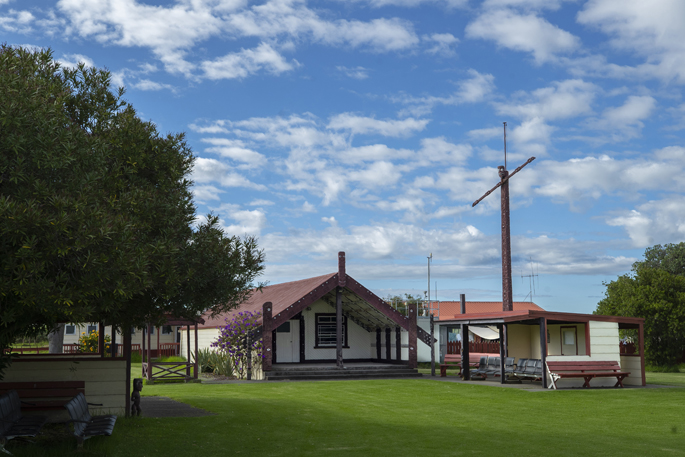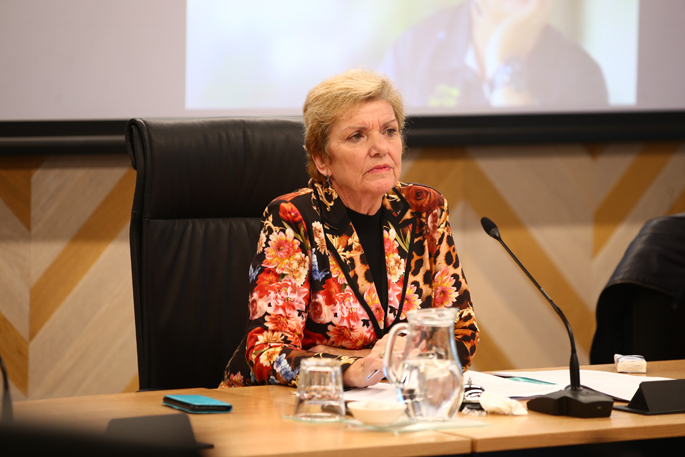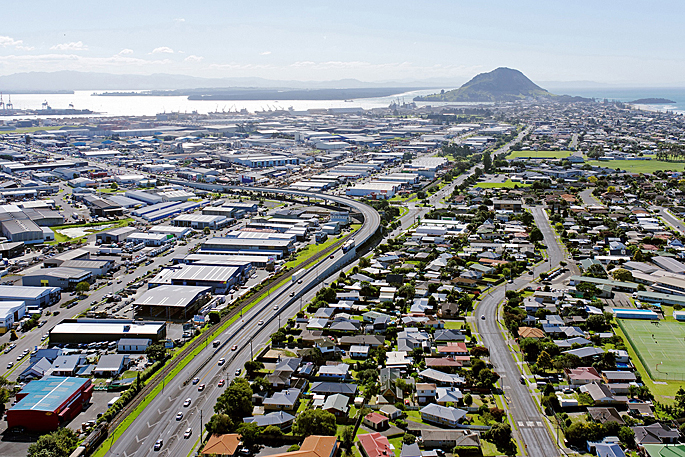Heavy industry is set to stay in Mount Maunganui but stricter controls around what will be allowed in future have been put in place.
Mount Maunganui’s industrial area, that sits on the western side of the isthmus, was classified as a polluted airshed in 2019.
A Te Whatu Ora report from July said poor air quality in Mount Maunganui was creating significant health risks.
Whareroa Marae on Taiaho Place has seen the industry grow up around it, and the marae believes industry was “slowly poisoning” its people.
In 2020 the marae took its concerns to the Tauranga City Council and Bay of Plenty Regional Council calling for the managed retreat of heavy industry away from their whenua.
An advisory group was set up and an investigation into the potential for managed retreat of heavy industry from Totara Street, south of Hewletts Road began.
In March 2023, a Tauranga City Council report revealed there was “no feasible pathway” for relocation because many of the industrial activities had existing user rights under the Resource Management Act.
A further report was done, and the Mount Industrial Planning Study said options for restricting land use included requiring any new ‘heavy industrial activity’ to obtain land use consent.
 Whareroa Marae residents believe they are slowly being poisoned by air pollution. Photo: John Borren/SunLive.
Whareroa Marae residents believe they are slowly being poisoned by air pollution. Photo: John Borren/SunLive.
On Monday, the Strategy Risk and Finance Committee decided to not permit any new emitting industries within the Whareroa and Newton Road and MacDonald Street areas.
It also looked to transition to lighter industry over the long term in these areas. As well as restricting housing and accommodation within current commercial zoned areas of the Mount Maunganui airshed.
The council would also engage with Whareroa Marae about future aspirations around residential activity.
Mount Maunganui Industrial Study consultant David Phizacklea said they had “heard a lot” from mana whenua, the community, and businesses in the past year.
Commission chair Anne Tolley said one of the challenges was most businesses didn’t want to move.
She said there was an inherent conflict between the marae and industry.
“We have an ancestral piece of land right in the heart of an industrial area and New Zealand's largest export port and that's not going to change, but what’s been put there is a vision to try and manage that.
“Those businesses will continue because they have existing use rights, but we want to make sure that they are able to make changes to the way they operate that improves their environmental outcomes.
 Commission chair Anne Tolley said there was an inherent conflict between the marae and industry. Photo: John Borren/SunLive.
Commission chair Anne Tolley said there was an inherent conflict between the marae and industry. Photo: John Borren/SunLive.
Changing the types of industry in the airshed could take decades, said Tolley
Commissioner Stephen Selwood agreed: “The land use change is going to be slow and relatively blunt in terms of achieving the outcomes in a timely way.”
Resource consents and environmental monitoring would have a more immediate effect, he said.
Committee member Rohario Murray asked how the vision balanced land use, supporting business growth, community wellbeing and the importance of the area to mana whenua, Ngāi Tukāirangi and Ngāti Kuku hapū.
Phizacklea replied it was a balancing act in terms of how the vision was implemented.
“What we didn’t want to do was lose sight of the fact that Whareroa is the ancestral home for Ngāti Kuku and Ngāi Tukāirangi.”
His report to council said businesses did not support the regulations.
 Some Whareroa Marae residents believe they are slowly being poisoned by air pollution. Photo: John Borren/SunLive.
Some Whareroa Marae residents believe they are slowly being poisoned by air pollution. Photo: John Borren/SunLive.
Murray also wanted to remind people: “Industry is here right now and has been for a little while, Ngāi Tukāirangi and Ngāti Kuku hapū of Ngāi Te Rangi have been here for much longer. And so when we say the industry is not going anywhere, mana whenua are not going anywhere.”
General Manager Strategy Growth and Governance Christine Jones said in a statement the council could only effect change for future users of the land. It couldn’t address existing land users that have existing use rights, she said.
“The issues we are now seeing in the industrial area have been generations in the making.”
Jones said to achieve their vision they will work with the Bay Plenty Regional Council, mana whenua, businesses and other stakeholders.
The recommendations would be put into the Mount to Arataki Spatial Plan which will be presented to the council in the first quarter of 2024.
Public Interest Journalism funded through NZ On Air.




1 comment
Just for Tolley
Posted on 05-12-2023 08:20 | By an_alias
I see an inherent conflict between democracy and what you stand for.
Leave a Comment
You must be logged in to make a comment.